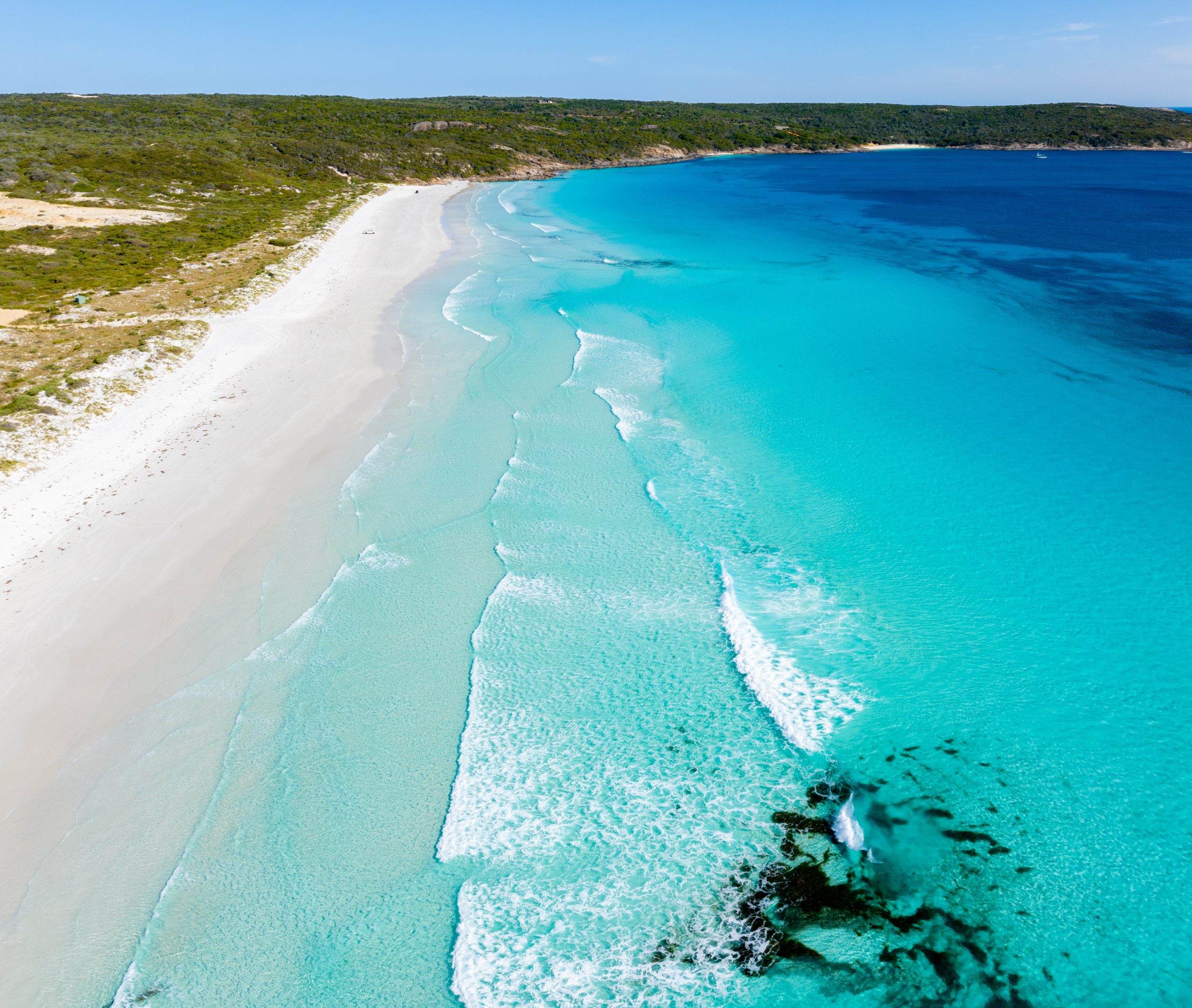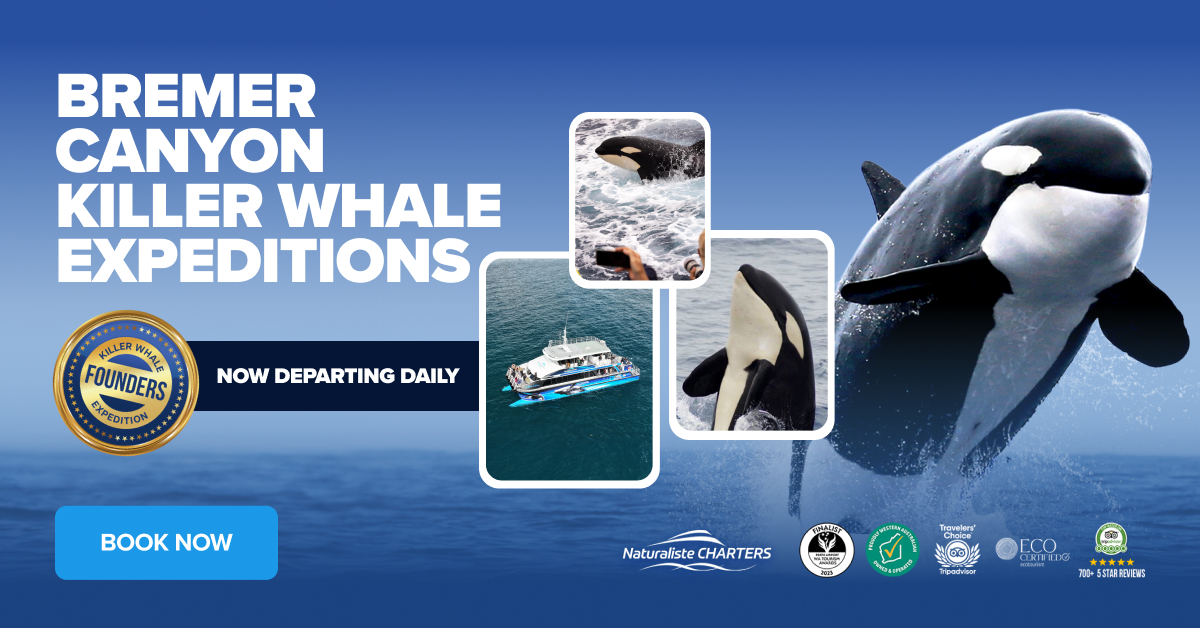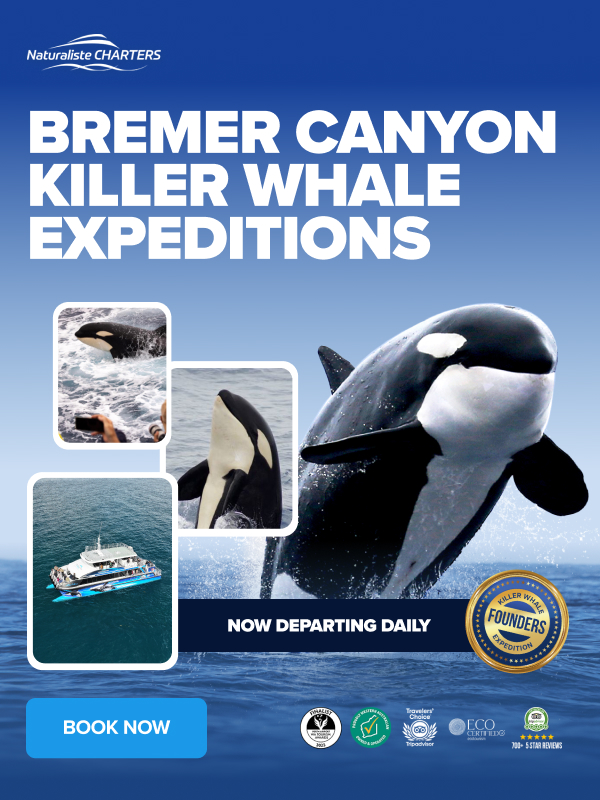Do Killer Whales Eat Humans?
It’s a question we’re asked all the time aboard our Bremer Canyon Killer Whale Expeditions — do killer whales eat humans? The simple answer is no.
Despite their dramatic name and status as one of the ocean’s most powerful predators. There has never been a recorded incident of a wild killer whale (Orcinus orca) intentionally hunting or eating a human.
Killer whales are apex predators — meaning they sit at the very top of the ocean food chain. But their hunting skills are highly specialised for marine animals, not humans.
What Do Killer Whales Actually Eat?
Killer whales have incredibly diverse diets. But what they eat depends entirely on where they live and what skills their pod has learned over generations. Scientists classify orca into different ecotypes based on their diet, hunting methods, and social behaviours.
Resident orca (often found in regions like the Pacific Northwest) feed almost exclusively on fish, particularly salmon. Their entire hunting strategy is based around following fish movements and communicating within the pod to herd fish effectively.
Transient orca (also called Bigg’s orca) are mammal hunters. They prey on seals, sea lions, dolphins, and even other whales. They use stealth, teamwork, and surprising bursts of speed to catch fast-moving marine mammals.
Offshore orca roam large distances and feed on schooling fish, squid, and sometimes sharks. In some regions, offshore orca have been recorded preying on large rays and sharks. Even removing and consuming the nutrient-rich livers of sharks with surgical precision. Despite this varied diet, nowhere in the world have killer whales been documented eating humans in the wild.
More on orca ecotypes from NOAA Fisheries
Have There Been Any Incidents Involving Humans?
Wild killer whale encounters with humans are incredibly rare. When they do occur, they are usually a case of mistaken identity or curiosity, rather than predatory intent.
In 1972, a surfer off the coast of California was bitten by an orca, possibly mistaken for a seal in a wetsuit. He survived, and this remains one of the only known injuries from a wild orca interaction.
In 2005, a young boy was bumped off a floating platform by a curious orca in Alaska. Fortunately, there were no injuries, and the orca moved away without further interaction.
Most wild orca interactions involve the animals displaying curiosity towards boats or divers. Sometimes approaching closely but showing no signs of aggression.
Read more about these rare cases on Wikipedia – Orca Attacks
Captive Orca Behaviour — A Different Story
Most of the more dramatic orca-related incidents involving humans have happened in captivity, not in the wild. The most famous of these involved Tilikum, a male orca at SeaWorld, linked to three human deaths. These tragic events have sparked major debates about the ethics of keeping orca in captivity.
Marine scientists widely agree that captive conditions — including confinement, lack of stimulation, and isolation from normal pod behaviour. These can lead to frustration, stress, and unnatural aggression in orca.
By contrast, wild orca in places like Bremer Bay display natural behaviours. Hunting, socialising, and interacting within their pods. As well as their interactions with humans are passive, curious, and non-aggressive.
Should You Be Afraid of Killer Whales?
The truth is, killer whales have far more to fear from humans than we do from them. In the wild, orca have never targeted humans as prey. Their hunting techniques, body language, and communication systems are all adapted for catching marine animals. Not people.
That’s not to say they aren’t powerful — orca are large, fast, and highly intelligent. But when we encounter them respectfully in their natural environment, they often display gentle curiosity rather than aggression.
When you join a Bremer Canyon Killer Whale Expedition, you’re witnessing one of the ocean’s most sophisticated predators. But also one of its most majestic and misunderstood creatures.
They are the rulers of their ocean world — just not man-eaters.
See Orca in the Wild with Naturaliste Charters
The best way to truly appreciate the power, beauty, and intelligence of killer whales is to witness them in their natural environment. There’s no better place in Australia to do that than Bremer Bay, Western Australia. On the great southern coast 2 hours east of Albany.
Every year from December to late April, the Bremer Canyon becomes a global hotspot for orca activity. Attracting the largest known aggregation of killer whales in the Southern Hemisphere. This seasonal gathering offers a rare and extraordinary opportunity to see wild orca in action, right here in WA.
Book a Killer Whale Expedition now
Onboard the Bremer Canyon Killer Whale Expeditions with Naturaliste Charters. You’ll have the chance to see these incredible animals up close — behaving exactly as nature intended. From powerful predations to playful calves, curious approaches to spectacular wildlife encounters — every day on the water is completely unique.
It’s a true bucket-list adventure. Guided by experienced marine biologists and passionate crew who love sharing their knowledge and love for the ocean.
Ready for the ultimate wildlife experience? Book your Bremer Bay Killer Whale Expedition today with Naturaliste Charters.





